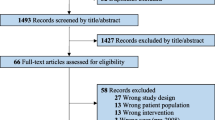Abstract
While it is presumed that public safety workers have always used cognitive defenses to cope with traumatic experiences, this process has lacked systematic study. The author asserts that the use of ego defenses is common, necessary for daily functioning and not necessarily pathonomic or in need of therapeutic confrontation. This article makes an attempt to organize some of the literature in the area, raise questions that need to be studied, and argue strongly for future research.
Similar content being viewed by others
References
Adler, T. (1989). Victims of stress suffer from intrusive thoughts.Monitor, American Psychological Association, Washington, D.C., p. 8.
DeAngelis, T. (1990). In praise of rose-colored specs.Monitor, American Psychological Association, Washington, D.C., p. 12.
Durham, McCammon, Allsion, Jr. (1985). The Psychological Impact of Disaster on Rescue Personnel.Annu. Emerg. med. 14: 7.
Gur, R., Sackheim, H. (1979). Self-deception: A concept in search of a phenomenon.J. Pers. Social Psychol. 37: 147–169.
Jones, D. (1985). Secondary disaster victims: The emotional effect of recovering and identifying human remains.Am. J. Psychiatry 142: 3, March.
Lavie, P. (1989). The Repressed Road to Trauma Recovery. Presented at the 1988 Annual Meeting of the Association of Professional Sleep Societies, Washington, D.C.
Lefkowitz, R. (1977). Industrial-organizational psychology with the police.Am. Psychol. 32(5): 346–364.
Nadler, A., and Ben-Shushan, D. (1989). Forty years later: Long-term consequences of massive traumatization as manifested by holocaust survivors from the city and the kibbutz.J. Counsel. Clin. Psychol. 57: 287–293.
Parker, C., and Roth, M. (1973). The relationship between self-disclosure, personality, and a dimension of job performance of policemen.J. Pol. Sci. Admin. 1: 3 p. 292.
Pennebaker, J. (1990).Telling Untold Stories Morrow: New York.
Taylor, S., Wood, J., and Lechtman, R. (1983). It could be worse: Selective evaluation as a response to victimization.J. Social Issues 39(2): 719–740.
Taylor, A., and Frazer, D. (1982). The Stress of post-disaster body handling and victim identification.J. Hum. Stress 39(2): p. 19–40.
Wagner, D. (1989).White Bears and Other Unwanted Thoughts: Suppression, Obsession, and the Psychology of Mental Control Viking, New York.
Williams, C. (1983). Coping with victimization: conclusions and indications for future research.J. Social Issues 39(2): p 730–739.
Author information
Authors and Affiliations
About this article
Cite this article
Janik, J. Addressing cognitive defenses in critical incident stress. J Trauma Stress 5, 497–503 (1992). https://doi.org/10.1007/BF00977243
Issue Date:
DOI: https://doi.org/10.1007/BF00977243




